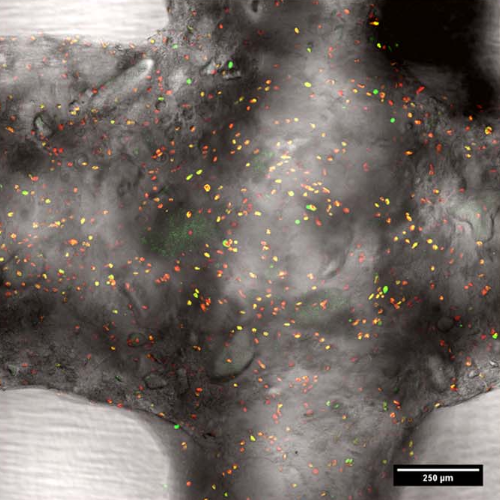Development of a clay based bioink for 3D cell printing for skeletal application.
Three-dimensional printing of cell-laden hydrogels has evolved as a promising approach on the route to patient-specific or complex tissue-engineered constructs. However, it is still challenging to print structures with both, high shape fidelity and cell vitality. Herein, we used a synthetic nanosilicate clay, called Laponite, to build up scaffolds utilising the extrusion-based method 3D plotting. By blending with alginate and methylcellulose, a bioink was developed which allowed easy extrusion, achieving scaffolds with high printing fidelity. Following extrusion, approximately 70%-75% of printed immortalised human mesenchymal stem cells survived and cell viability was maintained over 21 days within the plotted constructs. Mechanical properties of scaffolds comprised of the composite bioink decreased over time when stored under cell culture conditions. Nevertheless, shape of the plotted constructs was preserved even over longer cultivation periods. Laponite is known for its favourable drug delivery properties. Two model proteins, bovine serum albumin and vascular endothelial growth factor were loaded into the bioink. We demonstrate that the release of both growth factors significantly changed to a more sustained profile by inclusion of Laponite in comparison to an alginate-methylcellulose blend in the absence of Laponite. In summary, addition of a synthetic clay, Laponite, improved printability, increased shape fidelity and was beneficial for controlled release of biologically active agents such as growth factors.

- Biofabrication. 2017 Jul 25;9(3):034103
- 2017
- Biomaterials
- 28691691
- PubMed
Enabled by:
